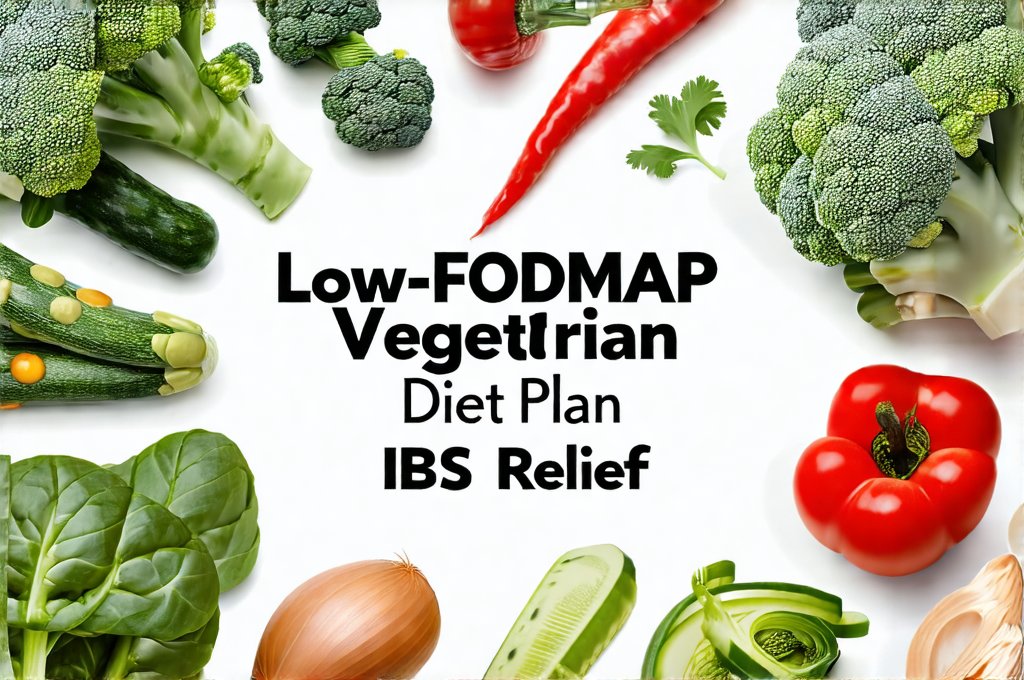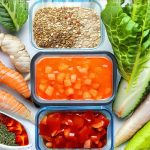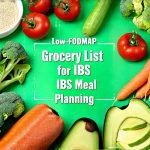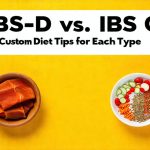Irritable Bowel Syndrome (IBS) is a chronic gastrointestinal disorder affecting millions worldwide, characterized by abdominal pain, bloating, gas, diarrhea, and constipation – often in fluctuating combinations. Dietary modifications are frequently the first line of defense in managing IBS symptoms, as food sensitivities play a significant role in triggering flare-ups. A low-FODMAP diet has emerged as a highly effective strategy for many sufferers, reducing digestive distress by limiting fermentable carbohydrates that can exacerbate symptoms. However, adhering to such a restrictive diet while also maintaining vegetarian principles presents unique challenges, demanding careful planning and understanding of food choices. For individuals seeking further guidance on managing discomfort, exploring resources like natural remedies can provide additional support.
This article outlines a comprehensive low-FODMAP vegetarian diet plan specifically designed for IBS relief. It will explore the core principles of FODMAPs, identify suitable and unsuitable plant-based foods, and provide practical guidance on meal planning, grocery shopping, and navigating social situations while staying committed to both dietary needs. The goal isn’t just symptom management but also nourishing your body with a balanced and enjoyable vegetarian diet that supports long-term gut health and overall well-being. Remember, this information is intended for educational purposes and does not substitute professional medical advice; always consult a healthcare professional or registered dietitian before making significant changes to your diet. If you are struggling to create a plan, consider how to create a safe meal plan that works for you.
Understanding the Low-FODMAP Diet & Vegetarianism
The term FODMAP stands for Fermentable Oligosaccharides, Disaccharides, Monosaccharides, And Polyols. These are short-chain carbohydrates that are poorly absorbed in the small intestine. When they reach the large intestine, they’re fermented by gut bacteria, producing gas and potentially causing bloating, pain, and changes in bowel habits – hallmarks of IBS. The low-FODMAP diet aims to temporarily reduce the intake of these carbohydrates to calm the digestive system and identify individual trigger foods. It’s typically followed in phases: elimination, reintroduction, and personalization. Successfully transitioning can be easier with tips for a low-FODMAP diet.
Vegetarianism, encompassing a range of dietary practices from lacto-ovo vegetarian (including dairy and eggs) to vegan (excluding all animal products), already restricts certain food groups. This can simplify some aspects of the low-FODMAP diet – for instance, eliminating meat automatically removes a potential source of high-FODMAP ingredients. However, it also necessitates careful attention to plant-based alternatives and ensuring adequate nutrient intake when restricting FODMAPs. Many common vegetarian staples, such as beans, lentils, apples, pears, and wheat products, are high in FODMAPs, requiring strategic substitutions and portion control.
Successfully combining these two dietary approaches requires a thorough understanding of both the low-FODMAP guidelines and the nutritional needs of a vegetarian diet. It’s about finding the balance between restriction for symptom relief and ensuring sufficient intake of protein, vitamins, minerals, and fiber from safe food sources. This approach isn’t meant to be permanent; the goal is to identify trigger foods and gradually reintroduce tolerated FODMAPs while maintaining symptom control.
Navigating Plant-Based Foods on a Low-FODMAP Diet
Many delicious and nutritious plant-based foods are low in FODMAPs and can form the foundation of a healthy vegetarian diet, even with IBS. These include: rice (white and brown), quinoa, oats (in moderation – up to 1/2 cup cooked), potatoes, sweet potatoes, carrots, spinach, kale, lettuce, tomatoes, cucumber, bell peppers, zucchini, eggplant, oranges, blueberries, strawberries, grapes, bananas (ripe but not overripe), and lactose-free dairy or plant-based alternatives like almond milk, coconut yogurt, and firm tofu.
Conversely, several common vegetarian foods are high in FODMAPs and should be limited or avoided during the elimination phase. These include: apples, pears, peaches, mangoes, watermelon, cherries, onions, garlic, mushrooms, asparagus, artichokes, broccoli (in large quantities), cauliflower, beans, lentils, chickpeas, wheat-based products (bread, pasta, cereals), rye, and honey. It’s important to remember that FODMAP content isn’t just about the food itself but also portion size – even low-FODMAP foods can trigger symptoms if consumed in excessive amounts.
Furthermore, hidden sources of FODMAPs exist in many processed foods, such as sauces, dressings, soups, and pre-made meals. Reading ingredient labels carefully is crucial to identify potential triggers. Look for ingredients like high fructose corn syrup, fructans, lactose, mannitol, sorbitol, and xylitol. Using fresh, whole foods whenever possible minimizes the risk of accidental FODMAP intake and allows greater control over your diet.
Building a Low-FODMAP Vegetarian Meal Plan
A successful low-FODMAP vegetarian meal plan centers around carefully selected ingredients and balanced nutrition. Here’s how to approach it:
- Breakfast: Opt for lactose-free yogurt with blueberries and a sprinkle of oats, or rice porridge with sliced banana and almond milk. Avoid wheat-based cereals and fruit juices high in fructose.
- Lunch: Salads made with spinach, lettuce, cucumber, tomatoes, bell peppers, and carrots are excellent choices. Add grilled firm tofu or quinoa for protein. Dressings should be homemade using low-FODMAP ingredients like olive oil, vinegar, and herbs. Avoid onion and garlic in dressings.
- Dinner: Rice noodles stir-fried with vegetables (carrots, zucchini, spinach) and tofu, seasoned with ginger and tamari (gluten-free soy sauce). Sweet potato and carrot soup is another comforting option.
- Snacks: Small portions of strawberries, blueberries, grapes, or a handful of walnuts are good choices. Lactose-free yogurt or rice cakes with peanut butter can also be satisfying snacks.
Decoding Food Labels & Identifying Hidden FODMAPs
Navigating food labels requires becoming a detective! Always check the ingredient list for hidden sources of FODMAPs. Here’s what to look out for:
- Sweeteners: Avoid honey, high fructose corn syrup, and artificial sweeteners like sorbitol, mannitol, and xylitol.
- Dairy: Choose lactose-free dairy products or plant-based alternatives. Be wary of whey (a milk derivative) in processed foods.
- Vegetables & Fruits: Pay attention to ingredients derived from high-FODMAP fruits and vegetables – for example, onion powder or garlic powder in seasonings.
- Thickeners & Stabilizers: Some thickeners and stabilizers may contain FODMAPs.
- “Natural Flavors”: This vague term can sometimes conceal hidden FODMAPs, so it’s best to avoid products that rely heavily on “natural flavors.”
Portion Control: The Key to Tolerance
Even low-FODMAP foods can cause symptoms if eaten in excessive amounts. This is where portion control becomes vital. For example, while carrots are generally low-FODMAP, consuming a large quantity at once could still trigger digestive distress.
- Start small: Begin with smaller portions of potentially problematic foods and gradually increase the amount if tolerated.
- Monitor your symptoms: Keep a food diary to track what you eat and how it affects your digestion. This will help identify individual sensitivities.
- Use measuring cups & spoons: Accurately measure portion sizes to ensure consistency and avoid overeating.
- Focus on balanced meals: Combine low-FODMAP foods with adequate protein, healthy fats, and fiber for optimal gut health and satiety. If constipation is a concern, consider a high-fiber diet to support regularity.
Managing Diarrhea with Diet
For those experiencing IBS symptoms that lean towards diarrhea, understanding the role of fiber can be crucial. A low-fiber diet may provide temporary relief by reducing stool frequency and urgency.
Remember that the low-FODMAP diet is a tool for identifying trigger foods, not a permanent restriction. The ultimate goal is to personalize your diet based on individual tolerance levels and enjoy a variety of nourishing foods without experiencing IBS symptoms. Additionally, incorporating morning light and gentle movement can also contribute to overall well-being and symptom management. Understanding which high FODMAP foods to limit is also essential for long-term success. Finally, exploring natural remedies alongside dietary adjustments can provide a holistic approach to IBS management.


















